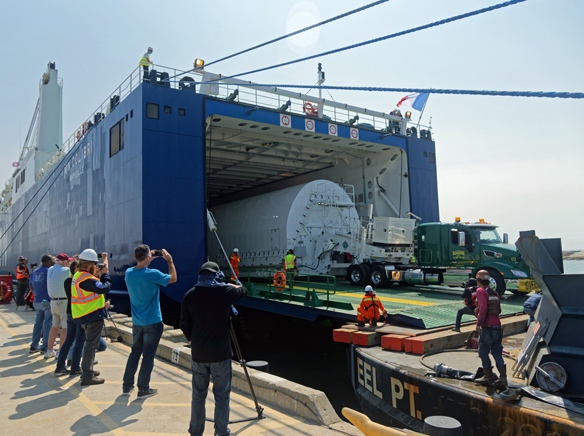The Navy and NASA don’t together very often, as the ocean and outer space are rather far apart.
However, Naval Weapons Station Seal Beach recently participated in a top secret operation to transport $10 billion James Webb Space Telescope.
The Webb telescope will be going on a long journey. NASA recently reported that the telescope traveled 5,800 miles from California to French Guiana. And it will be taking an even longer journey into space.
According to the Goddard Space Flight Center, it will be 1.5 million kilometers from Earth. The Hubble telescope (the Webb’s predecessor) has been in close Earth orbit, according to the Goddard Space Flight Center.
Seal Beach served as a stopover on the telescope’s itinerary.
“We are incredibly proud to have had a part in this effort to support NASA and the scientific community,” said base Commanding Officer Capt. Jason Sherman.
“I’m reminded of our work with NASA over 50 years ago during the Apollo moon rocket program,” Capt. Sherman said.
“Outside of events at our national wildlife refuge, it is very rare for the base to handle non-military operations,” wrote Gregg Smith, public affairs officer for the base, in a recent email.
“I’ve worked here for over 20 years and never seen anything like this,” Smith wrote.
“Seal Beach was chosen because the base had the facilities to load the telescope in a secure environment,” Smith wrote in another email.
“The telescope arrived here early Saturday morning and the ship departed late Sunday afternoon, so it was here for approximately 36 hours. The telescope traveled a road distance of approximately 26 miles from Redondo Beach to the naval weapons station,” Smith wrote.
The project took place at night.
Smith confirmed that it was unusual for ship loading to take place at night.
According to Smith, the operation took place over a weekend so the operation would not impact the support of Navy ships at the station’s wharf.
The operation took about two years.
“Back in September 2019 our base leadership was approached by NASA with a unique proposal,” according to a recent post on the Navy facility’s Facebook page.
“They wanted to use our secure wharf area to load a $10 billion space telescope onto a ship that would transport it to a launch site in French Guiana,” according to the post.
“This turned out to be the James Webb Space Telescope, or JWST for short. JWST is the successor to the Hubble Space Telescope, one of the most important scientific study instruments in modern history,” according to the NWS post.
In fact, the telescope arrived at its Earthly destination last Tuesday, Oct. 12.
“After some pandemic-related delays, a multinational team began detailed planning of the operation with us in late 2020,” according to the NWS post.
“Finally, from September 24-26, 2021, the JWST container and tons of additional support equipment was transported from the Northrop Grumman build site in Redondo Beach and loaded onto the French-flagged cargo ship MN Colibri,” according to the NWS post.
The cargo left the Navy station on Sept. 26.
On Monday, Oct. 18, a NASA tweet announced that the Webb telescope had been unpacked and “settled into the cleanroom” at the launch site.
The telescope is scheduled to be launched on Dec. 18, according to the Goddard Space Flight Center.












